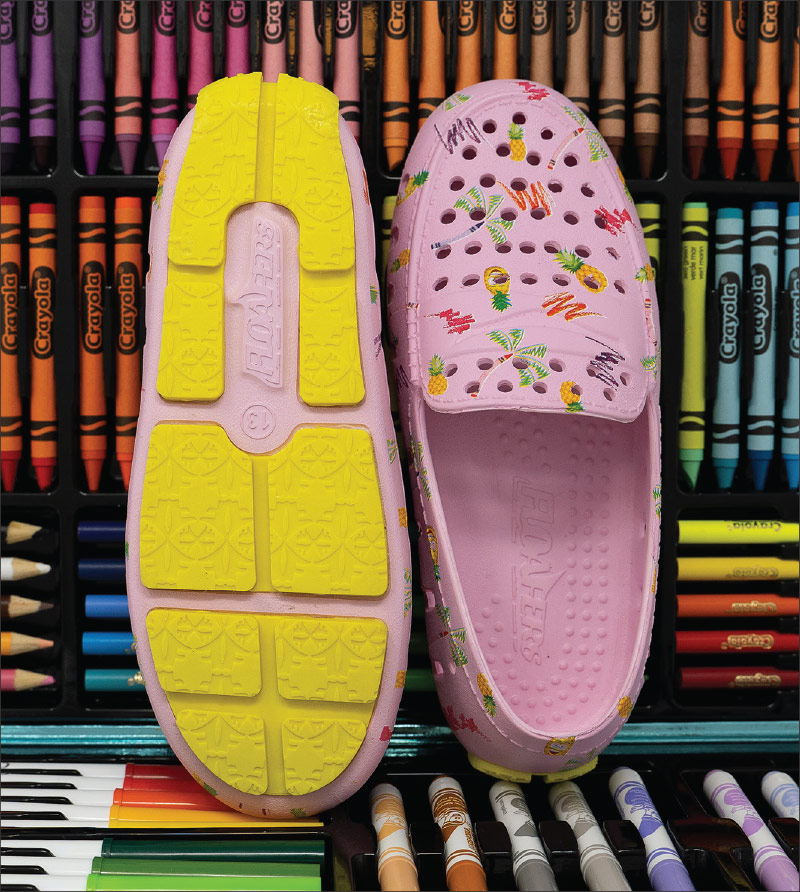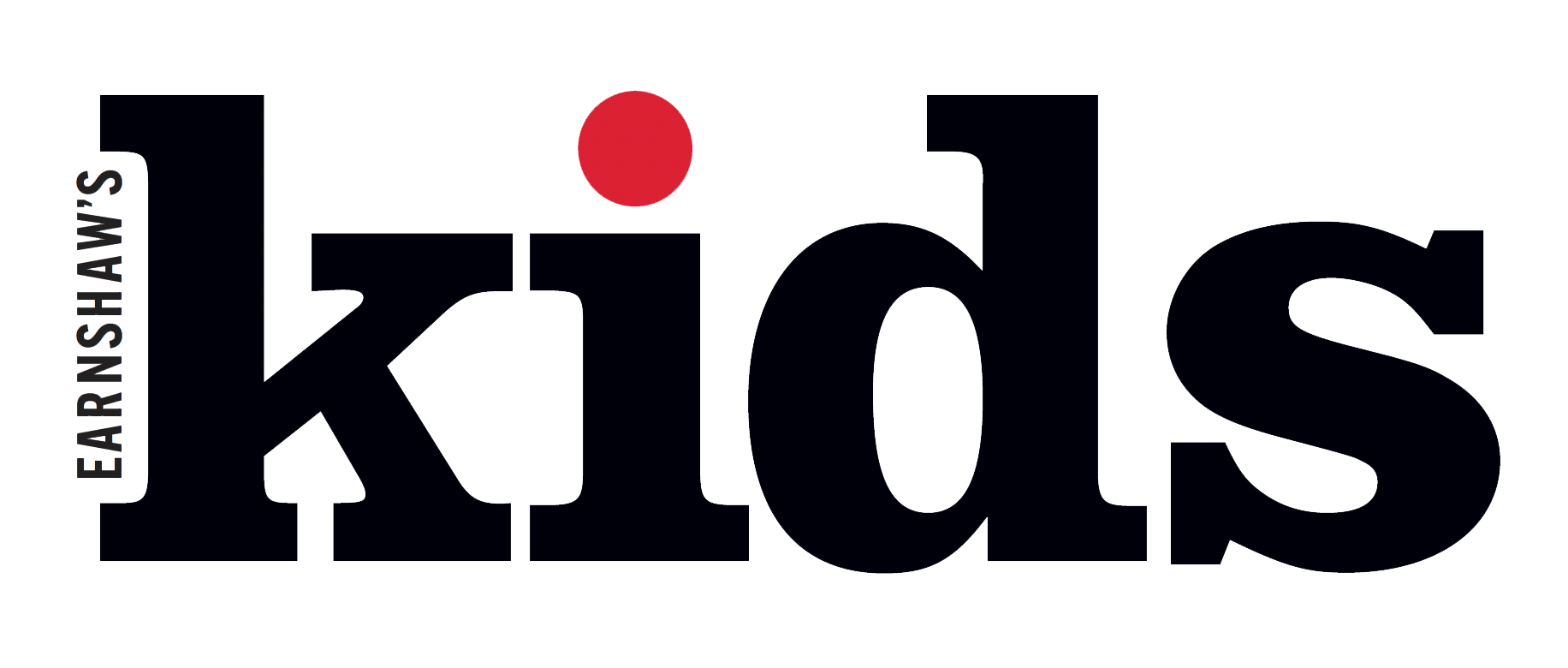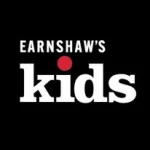The emergence of Floafers—a lightweight, waterproof and fashion-forward shoe brand—established a new category in foam footwear. Discover how the brand evolved from a Kickstarter campaign to crushing sales records, as Earnshaw’s speaks with Floafers CEO and President Larry Paparo.
Earnshaw’s: How did Floafers get started and how did you evolve with the company?
 Larry Paparo: The business launched in 2017 by a group of partners through a Kickstarter campaign. A year later while the company was exhibiting at the Atlanta Shoe Market, one of my business associates spotted the brand and was impressed. But he thought the Floafers team could use an industry expert to take it to the next level.
Larry Paparo: The business launched in 2017 by a group of partners through a Kickstarter campaign. A year later while the company was exhibiting at the Atlanta Shoe Market, one of my business associates spotted the brand and was impressed. But he thought the Floafers team could use an industry expert to take it to the next level.
I had been consulting for a range of footwear brands after selling my own business, LJP Intl., a sourcing firm that had held licensing agreements with brands such as Robert Graham, Mootsies Tootsies and Nine West Kids. I met with the Floafers team and eventually became a full-time consultant.
One of my first accomplishments was to help solve a manufacturing issue at the overseas factory that could have potentially ruined the company. I reorganized production, factory, tweaked the product, and created a strong investment team. In May 2019, I became CEO and president.
ER: What changes did you make to the product?
Paparo: We learned that consumers liked the lightness, cushioning and comfort of foam footwear, but the bulky looks that were available weren’t fashionable. So I took what I knew from traditional shoemaking and incorporated these techniques into Floafers. One of the design features that sets us apart from the competition is our medium-wide fit in the forepart of the shoe and a narrower heel.
I developed a proprietary process that I describe as the “secret sauce”—a specially formulated EVA foam that allows us to create a silhouette that mimics a more refined, traditional shoe. Floafers look, feel and fit like a traditional shoe. Next, we design our outsoles with rubber islands, which takes a special engineering process to manufacture. The rubber material is durable as well as slip-resistant, adding to the functionality of the shoes. Most foam companies make their bottoms and uppers out of the same material.
Our unique approach has resulted in the business growing four-fold the first year, triple the second year and double the third year. We are in 400 stores, and we can’t make them fast enough.
ER: How do you tailor the Floafer fit for kids?
Paparo: When we look at other foam shoes in the kids’ space, they’re often wide and boxy. The front of the shoe is almost as wide as the back, so kids’ heels are prone to popping out of the back of the shoe when walking. Our shoes are fuller in the forepart and narrower at the heel, much like our adult design, creating a more secure and comfortable fit. The footbed is also anatomically correct and features massage pods for enhanced comfort.
ER: What percentage of Floafers business is in the kids’ market?
Paparo: As soon as we launched kids in 2020, it became 25% of the business. Now, it’s up to half the business. In the adult space there’s lots of footwear to buy. However, for kids, there are not as many options. What we’re offering is footwear that’s fresh, functional and priced right in today’s challenging economy.
They’re a great alternative to flip-flops. Many camps require closed-toe shoes for kids for safety reasons. They’re also great for water parks or beach wear. However, they also work year-round as a school shoe since they can be worn with a sock peeking through the side openings for an added pop of color.
ER: How have you managed employee retainment during The Great Resignation?
Paparo: We have a wonderful, passionate team that loves the business. I met some of our employees through my past roles in the industry, while others are newcomers to the business. Our teams, both in the U.S. and abroad, work together across a range of areas including design, production and distribution. Since we’re a tight knit company, it’s easy for us to move quickly and make decisions in a timely manner so we don’t miss new opportunities.
Since what we do is special, people wanted to join our team, allowing us to grow during Covid. When other companies were shrinking, we were busy fast-forwarding a new category of casual-lifestyle footwear. Floafers have quickly become what I like to refer to as “two-mile” shoes—perfect for leaving at the front door for short hops to get the mail, walking the dog or running to the grocery store. They’re also antimicrobial, which made them a perfect accessory during Covid when health was a key concern. Mostly, we think of Floafers as “savvy frugality”—they’re cool and affordable.
ER: How did Floafers gain traction in the market?
Paparo: When I joined the company in 2018, I was able to tap into my relationship currency in the market that enabled me to get the brand into many independents and department stores. But it was word of mouth that generated the most buzz. We learned that shoes purchased on our website were rarely returned. If a consumer found they weren’t quite right or for them, they passed them on to a friend or relative instead of sending them back. The shoes also proved strong performers at our retail accounts—the sell-through percentages were 20% per week. We had one e-commerce site sell 130% of their first inventory – this means they were re-selling returns even before they came in.
ER: What are your sources of design inspiration?
Paparo: Our color palette is fun and playful. We like to add a pop of color on the sole, while on the uppers we screen print a range of patterns. We also look at what’s trending in the athletic world, which sparked a collection of sneaker-inspired styles set to launch in May under the ‘Big City’ collection.
ER: What global issues have impacted the business?
Paparo: Since we manufacture in areas of Vietnam that were not heavily impacted during Covid, we haven’t experienced supply-chain issues. However, more recently we had a boat that took 29 days to reach a port on the East Coast and then three weeks to get the product unloaded. The price of containers remains high and like with many other companies, it’s eating into our margins.
ER: What role has licensing played in the product?
Paparo: We’ve partnered with apparel designer Robert Stock for a shoe collection and high-profile brand Mossy Oak for camouflage looks. Next is a partnership with Crayola for a kids’ collection of Silly-Scents shoes set to launch on May 1–we’re the first with this concept from Crayola. For example, there’s a pineapple-inspired style with a matching pineapple scent and yellow bottom. Grape shoes smell like grape and have coordinating purple bottoms.
ER: What has been the most rewarding part of building the company?
Paparo: We’re committed to make a difference in peoples’ lives by contributing a percentage of sales to the American Cancer Society with a shoe featuring the iconic breast cancer pink ribbon. Other charitable causes are in the works that will have a kids’ connection.
ER: What have been your biggest challenges?
Paparo: It’s getting retailers to understand our mission. They’re so used to doing things the same way and not taking risks. This was especially true during Covid when they wanted to play it safe by downsizing their brand selection and inventory. But once retailers saw what Floafers could do for their business, they were on board.
ER: What advice would you give others looking to get into the kids’ market?
Paparo: It all starts with fit and comfort, and the shoes have to work with a kid’s lifestyle. They can be worn at home as a slipper, at school or at the playground or beach. They’re Sunday-to-Monday shoes that can be worn all the time. The antimicrobial foam can be easily washed so there are no more stinky feet. You can’t only address one feature or benefit anymore when it comes to kids. Shoes have to hit the fit, comfort, style, and price buttons.
























Leave a Comment: